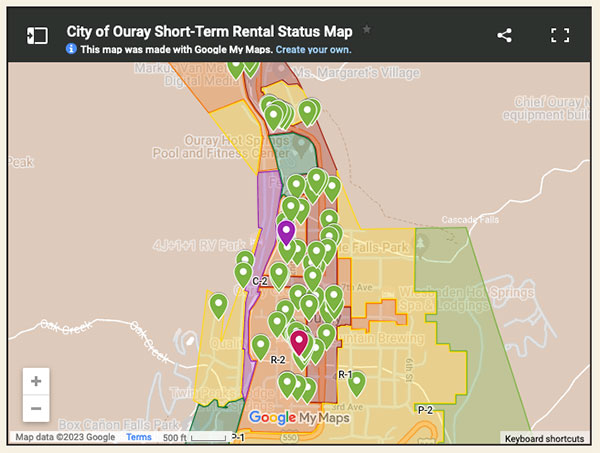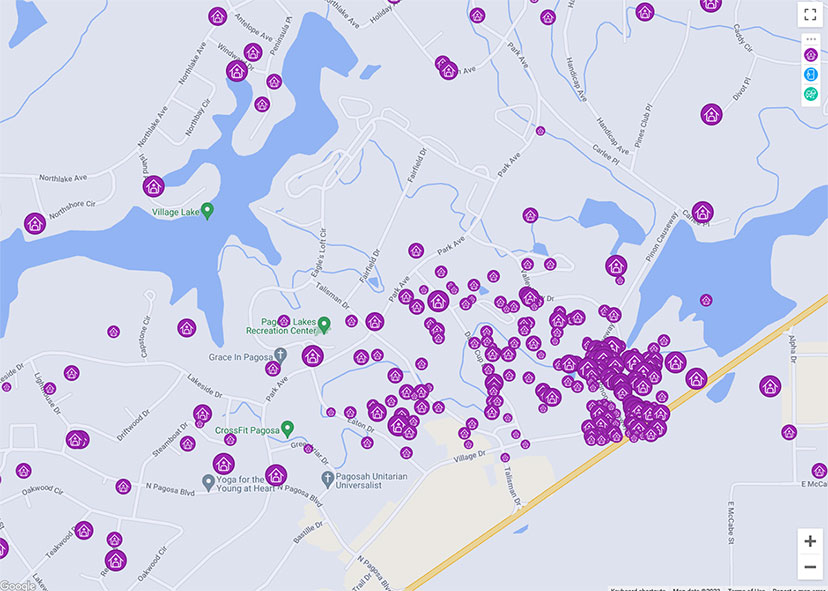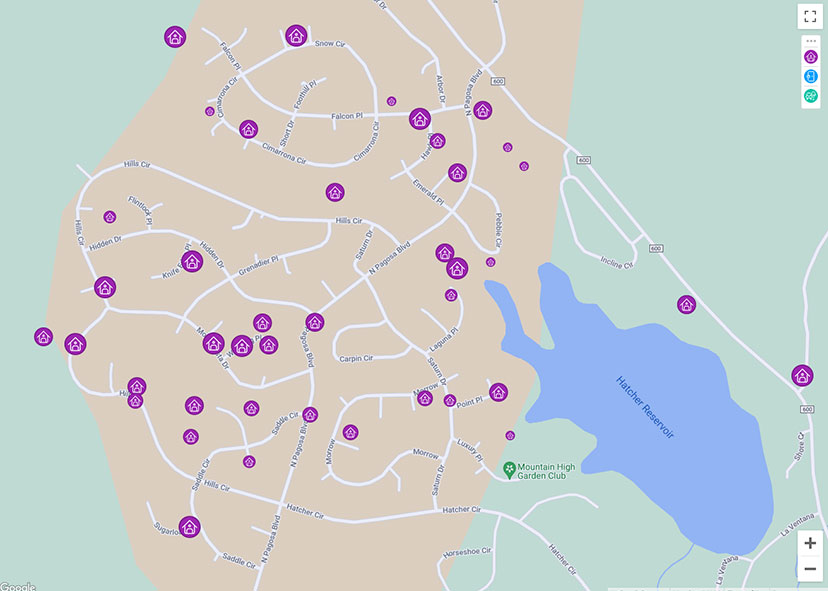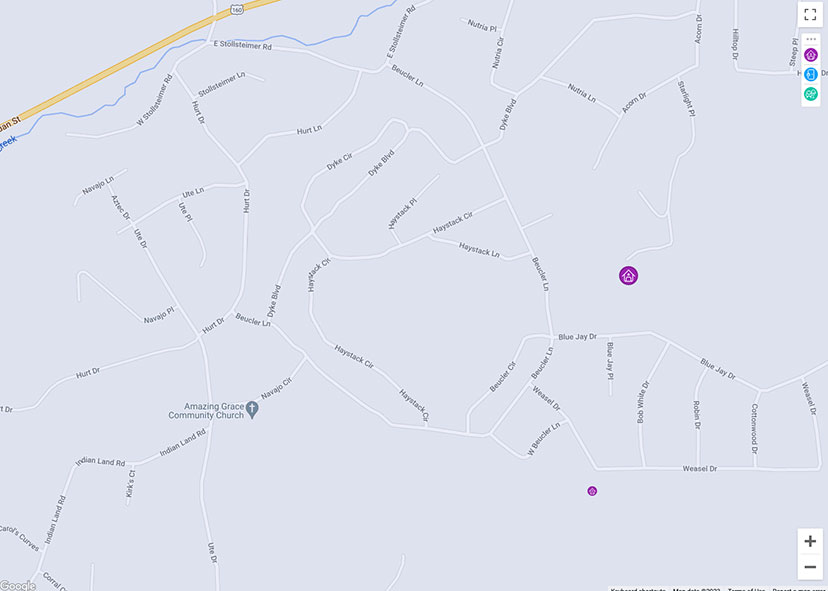PHOTO: Ouray, Colorado.
As far as I know, the Archuleta County Short Term Rental (STR) task force — looking into future changes to the County’s Land Use Regulations — met again behind closed doors this past Wednesday. No one outside the committee knows what regulations the task force might be considering, but rumor has it that some kind of recommendation will be made to the Archuleta Board of County Commissioners later this month.
Several changes to the Land Use Regulations, regarding STRs, have been recommended by the County Planning Department over the past two years, but the BOCC has been hesitant to adopt those suggested changes without some kind of ‘community’ endorsement. Thus, the current secret meetings of the STR task force.
A separate group looking into the ‘STR Problem’ also met on Wednesday afternoon — publicly, at the Sisson Library — to discuss possible policy recommendations. Specifically, the ‘Citizens STR Study Group’ discussed density caps for STRs located in the unincorporated county.
The Town of Pagosa Springs adopted some density regulations two years ago — maximum numbers of STRs in each neighborhood, required distances between STRs, required waiting periods when homes are purchased — but these regulations do not apply to STRs located outside the town limits… and about 80% of the properly-permitted STRs in the community are located outside our town limits.
We know that the conversion of residential homes into commercial motel units has an effect on neighborhood character, but we don’t know the exact magnitude of the effect. We also know that this conversion process has an effect on tourism, but again, we don’t know the magnitude.
Many Colorado communities have been addressing the impacts of STRs based on the assumption that the overall effects on neighborhood character, housing availability, and the local economy is essentially negative. Denver and Boulder, for example, established regulations that severely limit STRs, by allowing them only when the property is the owner’s primary residence. These types of policies are aimed primarily at preserving housing for full-time residents.
Other types of policies are aimed at generating tax revenues. One of the resort communities that depends heavily on tourism — and presumably, on STR availability — is Ouray, Colorado, population 1,030. (Not including tourists.)
Here are a couple of photos of the town’s main street. The County Courthouse was featured in the movie, True Grit.


From the City of Ouray website:
The City has adopted Short-Term Rental (STR) Regulations to protect the public health, safety and welfare; preserve the character and ambiance of neighborhoods within the City; prevent adverse impacts attributable to short-term rentals; collect data on short-term rentals; and ensure compatibility with surrounding land uses…
The Ouray City Council adopted a cap on short-term rental licenses in 2021. This cap is set to 120 maximum licenses that may be issued by the Community Development Department. The City is working with a third-party compliance and monitoring software to ensure that all STRs within the City are licensed and following all applicable laws and regulations…
The voters also determined that STRs ought to contribute to the pressing infrastructure needs of the city, and established a 15% excise tax on STR stays, starting January 2022.
50% of the revenue raised by the tax will be used to support housing programs; the other 50% will support the sanitation system.
We might wonder at the ‘cap’ set by the Ouray City Council. “120 maximum licenses”. If the city population is 1,030, that would suggest maybe 500 households (at two persons, average, per household.) A ‘cap’ of 120 would therefore imply that about 25% of the homes in Ouray will be allowed to become STRs.
One out of every four houses.
Thus, creating a map that looks like this:

Supposedly, this is an attempt by the City Council to “preserve the character and ambiance of neighborhoods.” I personally have a hard time imagining the character and ambiance of a neighborhood where every fourth house has been converted into a motel.
For comparison, the density of STRs in Archuleta County is about one-in-eleven homes. But the density is very different depending on the neighborhood. Here, for example, are the densities for three Archuleta County neighborhoods…
…the one near Pinon Lake and the Pagosa Springs Golf Course, northeast of City Market… one near Lake Hatcher… and the one in Aspen Springs.
Each purple circle represents an advertised STR. (Maps courtesy AirDNA.co)



But there’s more to STR regulation than merely density caps, as suggested by the new 15% excise tax approved by the voters in Ouray. According to AirDNA.co, the typical monthly revenue collected by a Ouray STR is roughly $4,000. Multiply by 12 months, and then multiply by 120 STRs, and we see collected rents of about $5.8 million a year.
If 120 STRs actually paid their required 15% excise tax, that suggests about $860,000 flowing into the City’s coffers each year — to be used for housing programs and sanitation improvements.
Again according to AirDNA, the typical monthly revenue for Archuleta County STRs is about $3,000… times 12 months, and multiplied by maybe 800 permitted STRs, that’s an economic impact of about $29 million.
If the Archuleta County voters approved a 15% excise tax, to be used for — say — housing and roads? Maybe $4.3 million a year? When an industry can become a major contributor to funding of community infrastructure, as the STR industry has apparently become in Ouray, maybe ‘density caps’ don’t make as much sense.
But how do the full-time residents of Archuleta County feel about this particular trade-off? At our Citizens STR Study Group on Wednesday, we heard a wide range of opinions, about that question.
Currently, the STR industry contributes relatively little to local government in terms of direct revenue, and much of what they do contribute goes to ‘tourism marketing’. The voters in the Town of Pagosa Springs tried to change that situation last April with Ballot Question A, but a lawsuit filed by STR owners — who were not excited, apparently, about contributing generously to local government housing efforts — has now been ruled invalid by District Court judge Jeffrey Wilson.
The only way for a County-wide excise tax to come before the voters in unincorporated Archuleta County… similar to the one the voters approved in Ouray… is for the Board of County Commissioners to agree to place it on the ballot. If any of our Daily Post readers chance to talk with our current commissioners, you might want to offer that suggestion to them.
But the voters — and the BOCC — also have other options for addressing a serious housing crisis.
